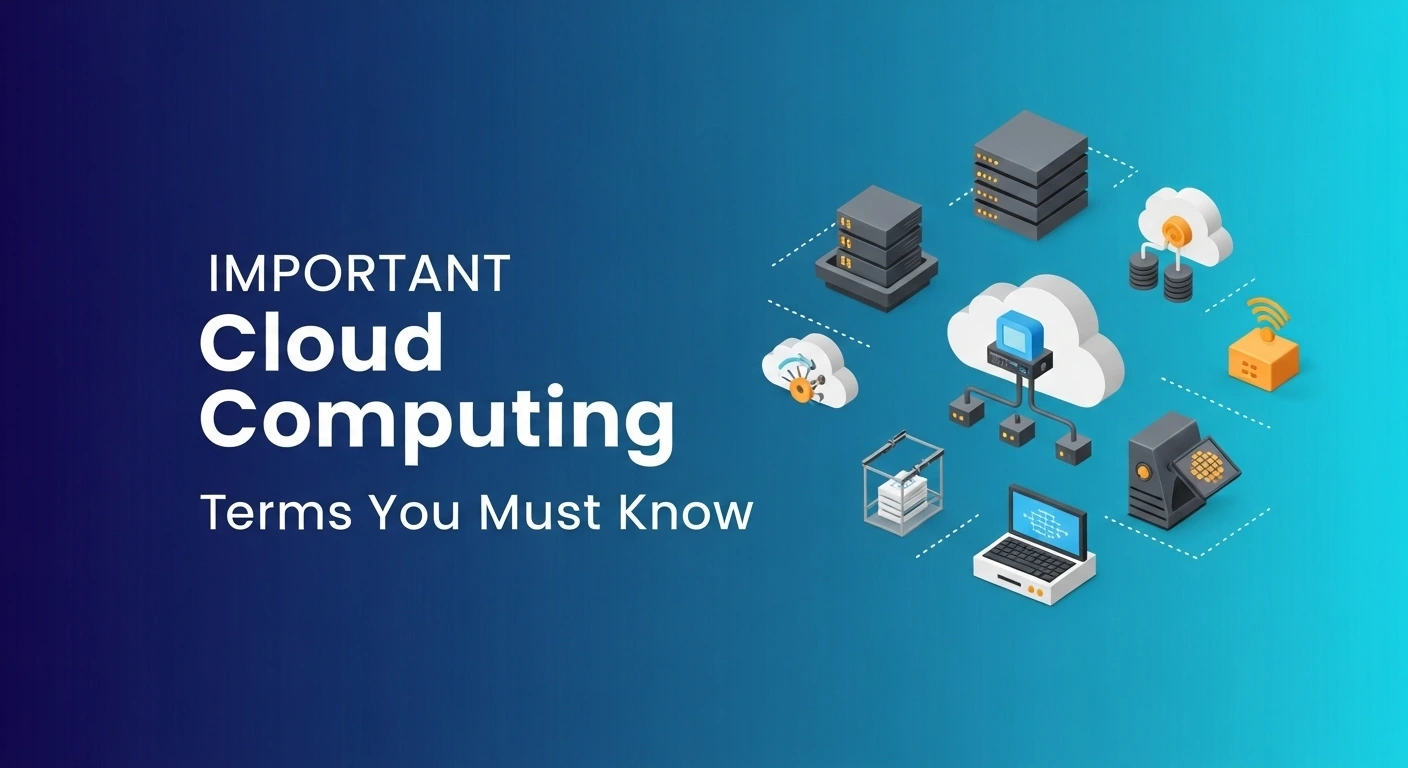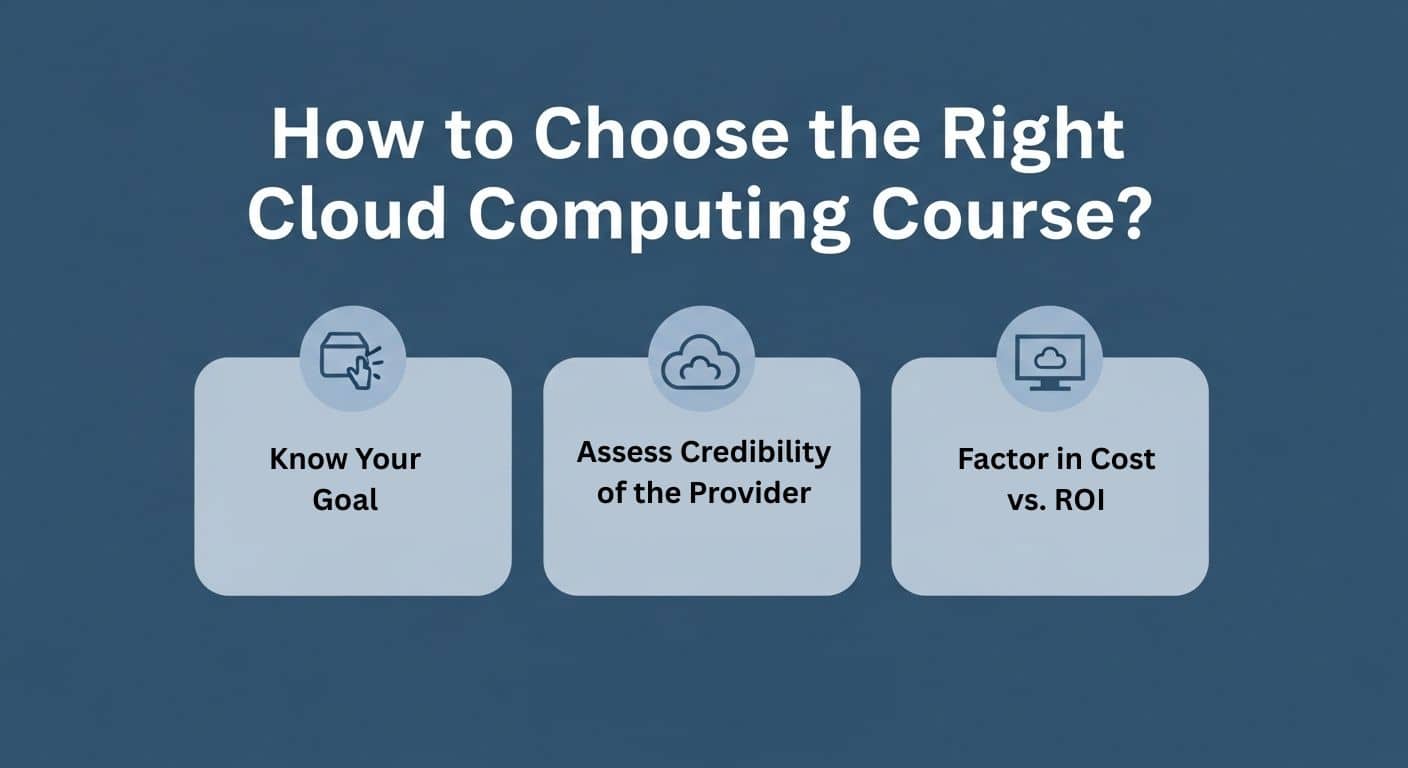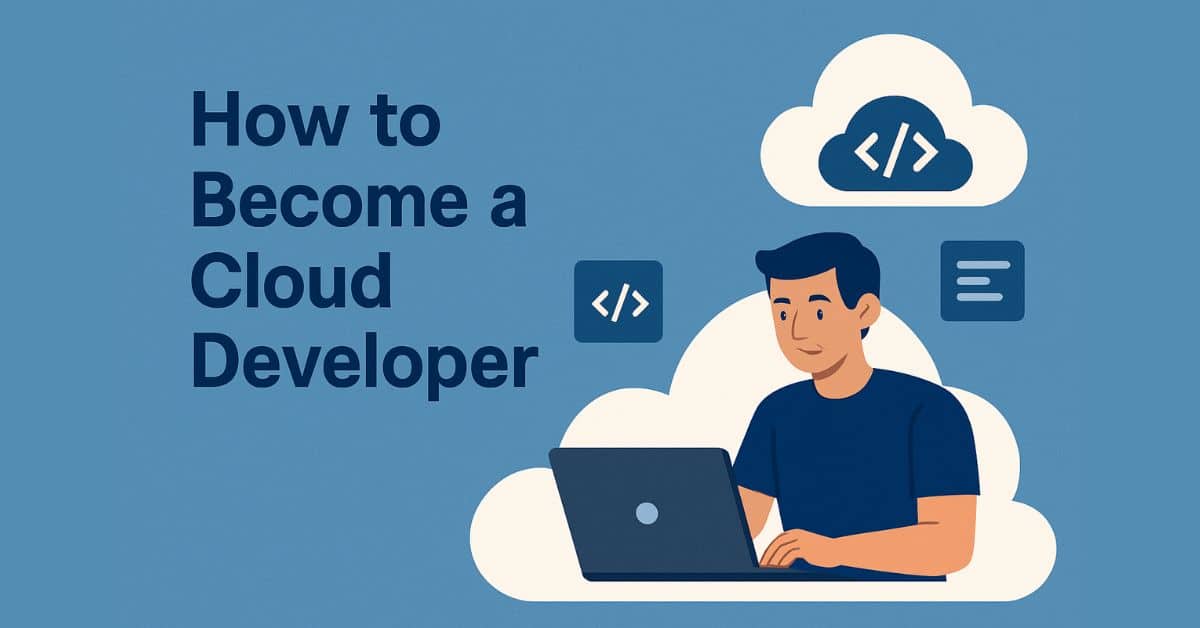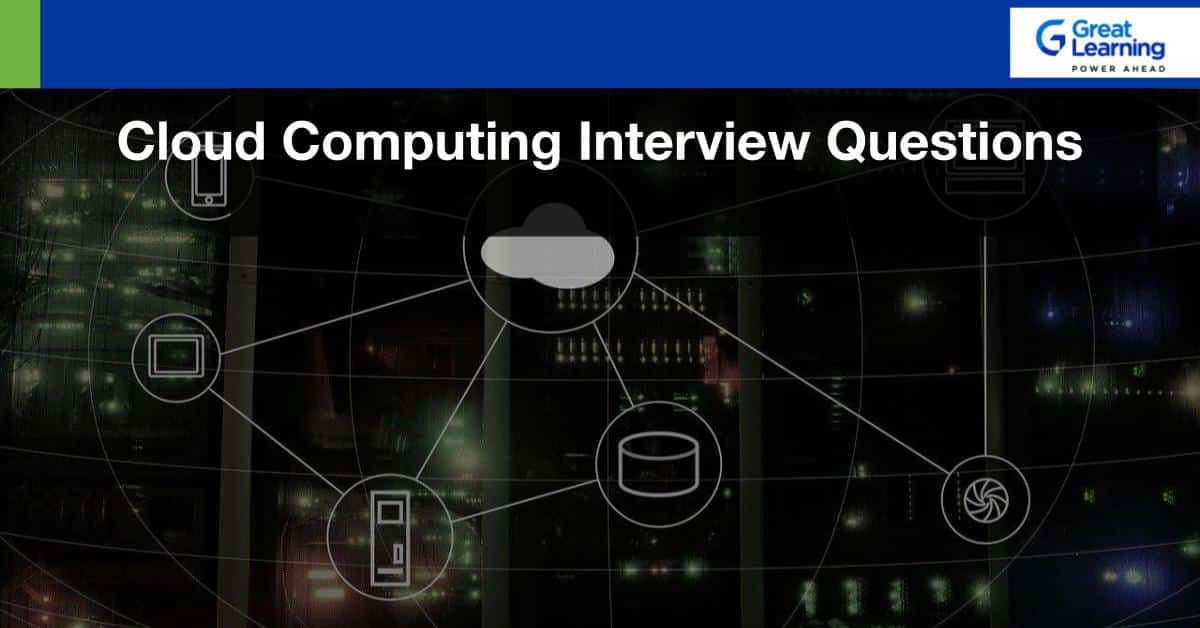Attempting to move to a new country when you don’t understand the language can be confusing. That’s what cloud computing can seem like if you’re not used to its special terms. From cryptic acronyms to technical words, the cloud world has its own language.
However, you don’t have to be tech-savvy to figure this out. In this blog, we’ve decoded the top 30 essential cloud computing terms you need to know.
Whether entering the tech space or simply looking to stay updated, this glossary will help you build a solid foundation and easily speak the cloud lingo.
Post Graduate Program in Cloud Computing by UT Austin
Master AWS, Azure & GCP in 6 months with 200+ projects & GenAI tools. Get career-ready with UT Austin’s Cloud Computing Certificate
A. Core Cloud Concepts
Understanding the foundational elements of cloud computing is crucial before diving deeper.
1. Cloud Computing
Cloud computing allows you to use technology services such as servers, storage, databases, networking, software, analytics, and more, all delivered over a network in the cloud (“the internet”). Its essential features are on-demand self-service, access to an extensive network, using resources from a pool, quick adaptability, and monitoring service. This system enables individuals and organizations to access advanced computing power without the need for costly equipment setup.
2. Cloud Infrastructure
This involves the hardware (servers, storage, and networking) and software (virtual platforms and management tools) needed for a cloud. With these components, cloud providers deliver solutions that are easy to adapt, dependable, and secure.
To understand how all these components work together in a structured way, check out our Cloud Architecture guide.
3. Cloud Provider
The companies operate their cloud networks to provide services for those who use them. Amazon Web Services (AWS), Microsoft Azure, and Google Cloud are the leading companies in the market, all with custom cloud solutions.
4. Cloud Migration
It involves shifting information, applications, or a company’s work from local servers to the cloud. Moving data between locations shouldn’t be rushed; correct planning is required to prevent loss and keep information accurate.
5. Cloud-native
These are applications made especially for running in the cloud. These applications can respond well to demand and remain reliable thanks to cloud technology, microservices architecture, containerization, and dynamic orchestration.
B. Cloud Service Models
6. IaaS (Infrastructure as a Service):
It offers computer systems, electricity, connection, and storage, all on the internet. Companies can stop paying attention to servers and data centers and upgrade whenever needed.
7. PaaS (Platform as a Service):
With PaaS, programmers can make, test, and send applications without handling the infrastructure. It reduces the time required for development by taking care of your server in the background.
8. SaaS (Software as a Service):
Software you access through the internet because it is hosted on the cloud, is known as SaaS. This model makes the service open to all devices without installation or local support. Examples include email services, collaboration tools, and CRM software.
9. BaaS (Backend as a Service):
BaaS assists app developers by offering built-in backend services like database handling, user authentication, and cloud storage.
10. XaaS (Anything as a Service):
It refers to any cloud service that includes every element I have mentioned and more. It highlights the growing variety of cloud services that are now available.
C. Deployment Models
11. Public Cloud:
Businesses can use these resources as cloud solutions shared by many companies over the internet. AWS, Azure, and Google Cloud all have public cloud services that allow users to scale without costing too much and access them easily. Even so, because data is not always stored on private servers, organizations may believe their privacy and control are threatened.
12. Private Cloud:
Unlike what happens with the public cloud, the private cloud is meant for just one group. With your server, you experience better security, have more control, and can make many adjustments, but you may have to spend more money and put in more work. Strict security and privacy when dealing with confidential data are why many companies choose private clouds.
13. Hybrid Cloud:
The model enables data and applications to share their environment by moving between private and public clouds. With hybrid clouds, firms can store sensitive information on private clouds and draw on public clouds when they need flexibility or want to reduce expenses.
Also Read: Public vs Private vs Cloud: Which Cloud Model to Choose
14. Multi-cloud:
Organizations take on different workloads or services using other cloud providers at the same time. Having more than one provider offers independence, performs better, helps control costs, and improves disaster recovery options.
D. Essential Cloud Technologies
Several key technologies enable the cloud's flexibility, scalability, and efficiency:
15. Virtualization:
The platform represents physical machines like servers, storage, or networks using virtual copies, which lets multiple virtual machines function on a single piece of hardware. Having virtualization tools is key to effectively using resources in cloud environments.
16. Containers/Containerization:
By packaging applications and their required parts in containers, developers can ensure their applications perform properly anywhere. This portability accelerates development and deployment.
17. Kubernetes:
A solution that uses open-source tools and automates the deployment, increasing the number of containers and ongoing management of container applications. Kubernetes is now the go-to solution for someone who wants to manage containers in production.
18. Serverless Computing:
Using this model, developers can run their code without dealing with servers. Cloud providers ensure infrastructure is set up, automatically scale it as needed, and manage it, so developers only need to worry about code.
19. Microservices:
Microservice is a way of constructing applications by integrating small, standalone services that link through APIs. This approach enhances modularity, scalability, and continuous deployment.
E. Key Cloud Features
20. Elasticity
One of the most compelling aspects of cloud computing is that it enables automatic adjustment of resources in real-time based on workload demands. Whether scaling up during peak usage or scaling down during idle times, it ensures optimal performance and cost-efficiency.
21. Scalability
While similar to elasticity, scalability typically refers to the long-term ability of a system to handle growing workloads by adding resources. This is essential for businesses planning to expand or experience fluctuating demand.
22. Load Balancing
This feature distributes incoming workloads across multiple servers or instances, helping maintain application responsiveness and prevent any single resource from becoming a bottleneck or point of failure.
23. Availability & Availability Zones
Thanks to availability, cloud-based applications are always open to users during system downtimes. To improve the chances that their services stay up, cloud providers divide each region into multiple data centers called Availability Zones (AZs).
24. Automation
Automation in the cloud involves using tools and scripts to manage infrastructure, deployments, and operations. This reduces human error, speeds up processes, and supports DevOps practices.
F. Data & Security
25. Cloud Backup:
It means keeping data duplicates so they can be accessed in the cloud. It prevents data loss when hardware, external attacks, or mistakes happen.
26. Disaster Recovery:
They are systems and techniques to fix services and restore essential data after something bad happens. A reliable disaster recovery plan helps businesses recover quickly and continue their operations.
27. Compliance:
Users of cloud systems must follow industry regulations such as GDPR, HIPAA, or SOC 2. You must safely store information, ensure openness, and adhere to strong governance guidelines.
28. Encryption:
Encryption guarantees that information moves and is stored securely in the cloud, ensuring it doesn’t get accessed by anyone who is not supposed to view it.
29. Service Level Agreement (SLA):
An SLA establishes the standards for quality between a business using the cloud and its provider. The agreement states how much time each element should be up, how quickly the service provider should respond, and the duties assigned to each party.
G. Networking & Performance
30. Content Delivery Network (CDN):
A CDN comprises servers worldwide that keep and provide web images, videos, and static files when requested. Content delivery networks cut load wait times by providing content from the closest server to the user.
31. Edge Computing:
Instead of sending data to a central cloud server, edge computing handles it near the devices or sensors where it’s generated. Both latency and used bandwidth are cut, which explains why it works best for urgent tasks like managing self-driving cars or real-time analysis.
32. Endpoints:
Devices, applications, or nodes that speak with cloud services in a cloud network are called endpoints. It is necessary to manage and keep secure these endpoints as they help protect the reliability and security of your cloud environment.
H. Data & Analytics
33. Big Data:
With the cloud, it is easy to adapt infrastructure when working with big datasets. This matters a lot for businesses using data, predictive modeling, and machine learning.
34. ETL (Extract, Transform, Load):
ETL pipelines are foundational in analytics workflows. With the cloud, such tools rapidly get data from multiple sources, process it so it can be analyzed, and store it in data warehouses or lakes.
35. Replication:
Replication means copying data over several storage systems or places to maintain easy access and to recover data if needed. Cloud-based businesses must stay running when something unexpected happens.
Conclusion
If you’re new to cloud computing or want to strengthen your understanding, you should know these 30 terms. These ideas contribute to the structure and growth of cloud services today.
To begin your cloud journey with expert guidance and comprehensive coverage, explore the Best Cloud Computing Courses and build job-ready skills in no time.
The future depends on cloud computing rather than just being a fad. Educate yourself now, and you can help lead new changes in the industry tomorrow.
Further Reading:






